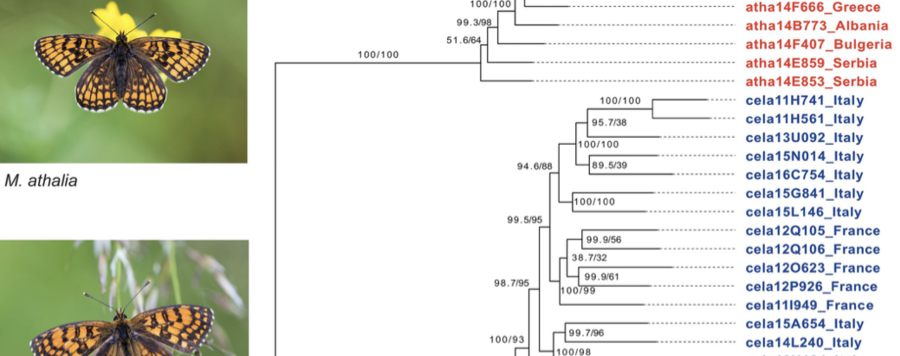
Delimiting continuity: Comparison of target enrichment and double digest restriction-site associated DNA sequencing for delineating admixing parapatric Melitaea butterflies
Parapatrically distributed taxa pose a challenge for species delimitation due to the presence of gene flow and inherent arbitrariness of exactly defining the species boundaries in such systems. We tackled the problem of species delimitation in a parapatric species pair of Melitaea butterflies using two popular genomic methods—double digest restriction-site associated DNA sequencing (ddRAD) and target enrichment. We compared newly generated target enrichment dataset with 1733 loci to the already available ddRAD data from a previous study on the same set of specimens using a suite of phylogenetic, population genetic, and species delimitation methods. We recovered consistent phylogenetic relationships across the datasets, both demonstrating the presence of a genetically distinct Balkan lineage and paraphyly of Melitaea athalia with respect to Melitaea celadussa. Population genetic STRUCTURE analyses supported the presence of two species when using ddRAD data, but three species when using target enrichment, while a Bayes factor delimitation analysis found both two and three species scenarios equally decisive in both datasets. As the results obtained from both methods were largely congruent, we discuss some practical considerations and benefits of target enrichment over RAD sequencing. We conclude that the choice of method of genomic data collection does not influence the results of phylogenetic analyses at alpha taxonomic level, given a sufficient number of loci. Finally, we recommend a solution for delineating species in parapatric scenarios by proposing that parapatric taxa be consistently classified as subspecies or complete species, but not both, to promote taxonomic stability.





